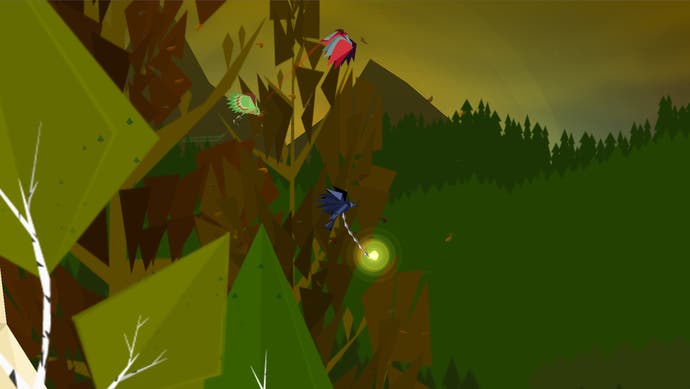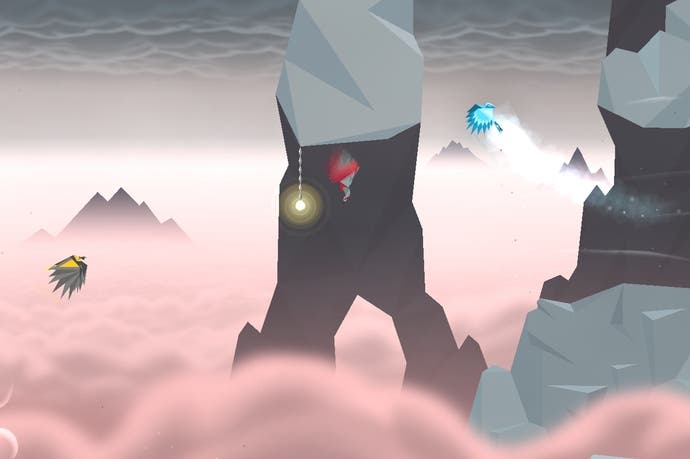Chasing Aurora review
Hide and sweep.
For all the wonder of the new machine (and every new machine carries with it a certain degree of wonder) and all the hum of its potential uses (and what new machine doesn't radiate possibility?), the Wii U faces a variety of difficulties in uniting people around its design. The Nintendo Wii's great success - at least in its formative months - was found in clarity of purpose, one best demonstrated by Wii Sports, a game that any spectating human being could understand within moments.
The Nintendo Wii removed the plastic barriers, the sticks and buttons that have for decades presented a small but significant hurdle to many who might otherwise play games. In Nintendo's motion-controlled revolution, one merely had to clutch the baton, swing the arm and watch as physical will was translated to screen: the tennis racquet carving a slice through the air, the bowling ball rattling off down the alley.
Wii U's grand innovation is not so clear and not so easily explained. The technology may be simpler than an iPhone, but the application is unknown, alien and still somewhat inscrutable. Moreover, where the Nintendo Wii removed the barriers between a player and the machine, and a player and their friends, Wii U erects a new barrier, previously unknown in communal video games. One player, by virtue of holding the 'screened' GamePad controller, is naturally separated from his baton-wielding rivals. A type of exclusion is hard-wired into the console hardware: one player is better than the others, or at very least better equipped and, as a result, more enabled. Everyone wants to be the one with the GamePad. Everyone resents the person who's clutching it. The system divides us, where its precursor united us.

Perhaps for this reason many of the games available at launch amplify this division between players. Broken Rules' Chasing Aurora, like Mario Chase and a handful of Nintendo's own multiplayer mini-game proofs-of-concept bundled in Nintendo Land, is a game built upon the foundations of hide-and-seek, separating the GamePad-holding player from the others who are united in their somewhat lower class of control scheme.
You play as birds, or birdmen (it's a little unclear), swooping and diving around a series of outdoor locations rendered by flat-colour, art deco triangles. One player - the lucky guy with the GamePad - is given a short head start to find a hiding place among the trees or tucked inside the crag of some cliff-face and, on the signal, the rest must flap and loop-de-loop around the scene seeking out their prey. Complexity is added by another mode in which the hiding player must carry a droppable glowing orb that slows movement when in flight (as in Animal Crossing: Sweet Day, where you must drop the sweets you're carrying in order to gain speed).
The controls are consistent regardless of the controller you're using or the mode you're playing, and it's here that the game hopes to distinguish itself from Mario Chase et al. One button flaps your wings, another throws your bird into a breakneck dive and, from this simple palette of interactions, much grace and nuance can emerge as you begin to work with the gusts of wind sweeping and curling around the environments. Hammering the 'flap' button produces poor results. Instead you must learn the rhythms of soar, glide and dive in order to gain pace and manoeuvrability - skills familiar to anyone who loved Yuji Naka's NiGHTS into Dreams, with which this game shares a soul.
The multiplayer modes are spread across a dozen or so different environments, each with its own striking scheme and layout, but each essentially of the same type. There are no gimmicks to distinguish one from the other and for this reason there's too little variety for the game to support extended multiplayer sessions. There are moments of excitement and hilarity (of much the same pitch and tempo as those experienced in Mario Chase) and, as ever, the more players that are involved, the more enjoyable and riotous the experience becomes. But the three play modes are too similar and the ennui of repetition soon descends through the clouds.

For the solitary player there's even less to do in Chasing Aurora. Rather than mirroring the multiplayer modes with AI support, instead you're presented with 20 looping racecourses. You must fly through the series of gates marking out the racetrack, adding seconds to the counting-down clock in order to extend your run. Miss a gate and your multiplier is halved. Here the emphasis is on building score by completing laps and maintaining the points combo, and you're awarded an Angry Birds-style star rating between one and three based upon your performance. Frustratingly though, there are no online leaderboards here, so unless you live in a particularly game-starved competitive household there are few incentives to better your score on any give stage through repeat play.
Chasing Aurora sits in a strange place in the contemporary market. The assured art direction results in one of the most striking and distinguished-looking games of the year, but this keenness of creativity isn't matched by a breadth or ambition of ideas elsewhere. And while it seems churlish to criticise the game's £10 price tag - which in another time might have seemed reasonable and fair - the App Store's recalibration of our collective sense of cost-to-value expectation damages this game.
More problematically, there is a familiarity here: just a week or two into the Wii U's life we've seen it all before. Nintendo Land may paint its ideas in saccharine, high-contrast colours, a far cry from Broken Rules' subtle, melancholic vistas - but beneath the style the ideas sit too closely. This proximity is in part forced by the hardware, 'hide and seek' still evidently the most comfortable multiplayer application for the Wii U's gimmickry. Chasing Aurora is a game with its own problems then, but which speaks to far wider-ranging issues that Nintendo and its designers face.

